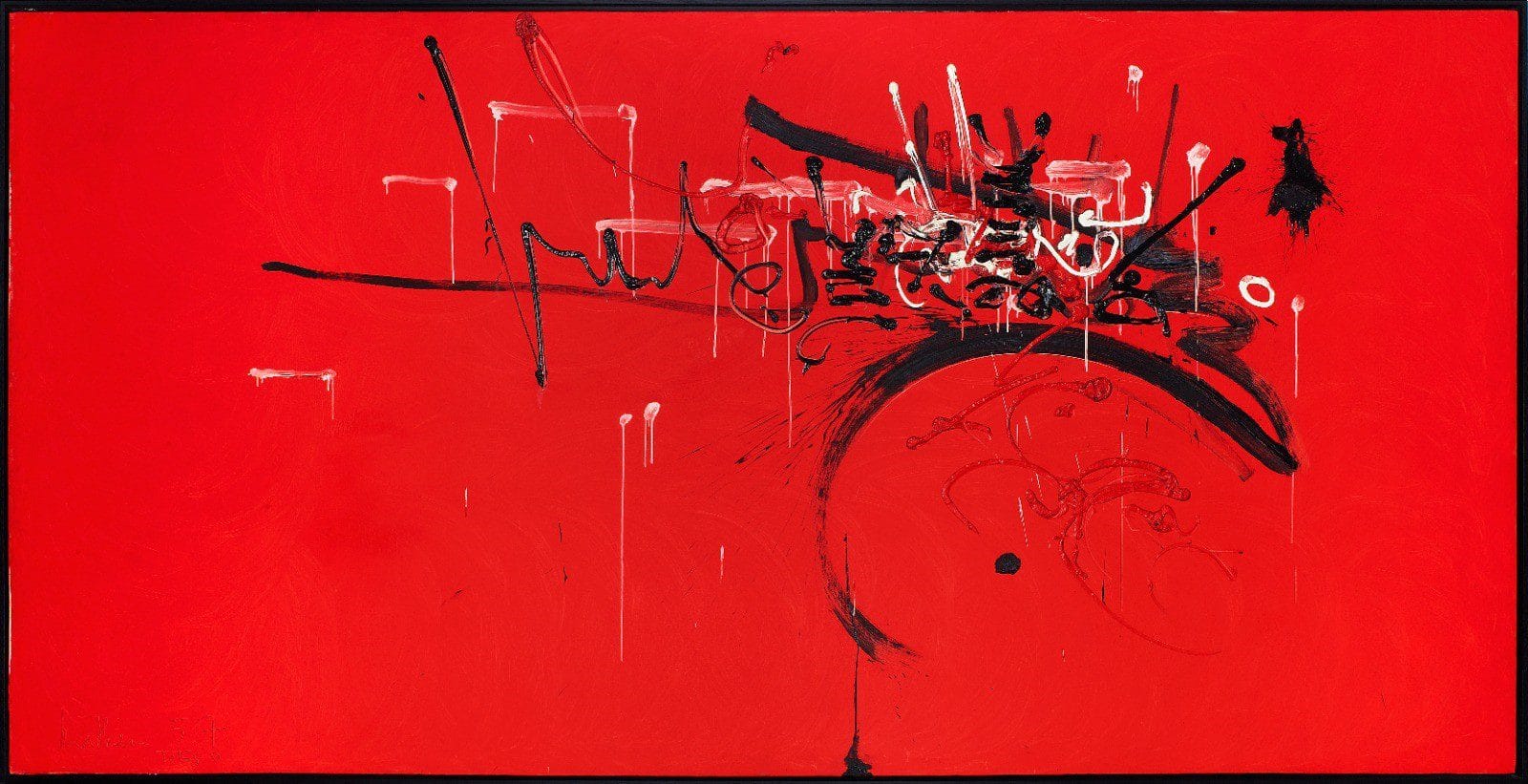Paris – An exceptional and rare work by Georges Mathieu (1921-2012) entitled “Exil de Go-Daigo dans l’île d’Oki” is the highlight of the ‘De l’avant-garde à nos jours’ sale at Bonhams Paris on Thursday 9 June. Never seen before at auction, it is estimated at €800.000-1.200.000.
The large oil on canvas was painted in September 1957 by the artist in Tokyo at the personal classroom of S?f? Teshigahara, the founder of the Sogetsu-Ryu school of Ikebana. In September 1957, it was exhibited in Tokyo and later in Osaka, at a show organised by the Gutai Art Association. It then entered the collection of Jir? Yoshihara, the founder and ‘father’ of the Gutai movement.
Kato Mizuho (the co-author of the book “Avant-Garde Art in Postwar Osaka” and Guest Associate Professor at the Museum of Osaka Museum) wrote that this painting became the symbol of the Gutai interchange with overseas artists. It was also exhibited at the very important “New Art from the Abroad” exhibition in Osaka, in 1966.
Giacomo Balsamo, International Director Post-War & Contemporary Art Department of Post-War & Contemporary Art Department, said: “This work, painted in Japan by the artist in 1957, is truly exceptional in every way, for the quality of its execution, its color, its scale and its provenance. With its strong links with Michel Tapié and the Gutai group, the painting is of immense historical importance and is coming up for auction for the very first time since its creation.”
Georges Mathieu challenged the establishment by creating a body of work hitherto unimagined. Born in 1921 in northern France, he studied law, English and Philosophy. Georges Mathieu took the decision to become a painter and that his painting would not be figurative. He settled in Paris in 1947 where he worked as Director of External Relations and Advertising for the United States Lines Company. It is at this period that he discovered the painting of Hartung, Atlan and Wols and started organising events in favour of an art that would be free of all classical constraints which he called Abstraction Lyrique.
Georges Mathieu was the first person to bring French and American artists together. In November 1948, Pollock, Tobey, Gorky, Reinhardt, Russell, de Kooning, Rothko and Sauer met with Bryen, Hartung, Picabia, Wols and Mathieu at the Galerie du Montparnasse. Here, the artists representing abstract expressionism interchanged with those from the abstraction lyrique movement of which Mathieu was the ‘father’ and theoretician.
Mathieu travelled extensively from 1956 onwards; London in 1956, Japan, the United States and South America in 1957. He visited the Middle East and the most important European cities, showcasing everywhere the revolution of abstraction lyrique at international avant-garde events. In each country, he created his very large-format paintings live, sometimes in front of audiences of hundreds of people. The artist thus offered the public a show in the form of a spectacular and completely unprecedented performance during which no mistake could be made in this duel of body and soul delivered to the canvas.
While in Japan in 1957, Mathieu met up with art critic Michel Tapié in Nishinomiya (located between Osaka and Kobe) to visit the Kaisei-ji (Buddhist temple of the Rinzai sect along with members of Gutai. There, he had the chance to admire a “frenetic calligraphy” painted by the Zen Buddhist monk Nakahara Nantenb? (1839-1925) on a fusuma (sliding paper door) in one of the temple rooms. It features a giant, eight meter, calligraphy made with a very large brush, which Mathieu considered to be “something rather informal“, thereby employing the term used by Tapié at the beginning of the 1950s to describe the “anti-geometric, anti-naturalist, and non-figurative” avant-garde which is built around lyrical abstraction, itself identified at the end of the 1940s.

From left to right: Peggy Guggenheim, Jiro Yoshihara, Yoko Ono (reading), Michio Yoshihara, Atsuko Tanaka, David Tudor and John Cage facing this painting in 1962
Other highlights of the sale will include :
- A large painting by Robert Combas, ‘Louis XI’, 1989. Estimate: €90,000-120,000
- A rare work by Asger Jorn, ‘Douleur silencieuse’, 1960. Estimate: €70,000-100,000
- A 2015 very important work by Joana Vasconcelos ‘Love in a Box’ exhibited in many institutions. Estimate: € 25,000-35,000
